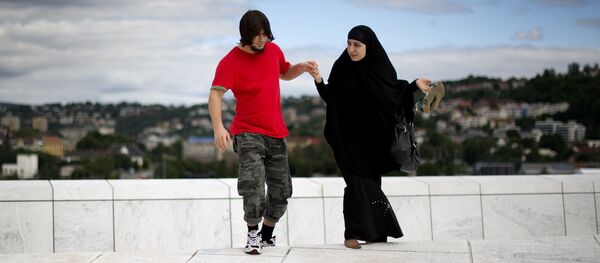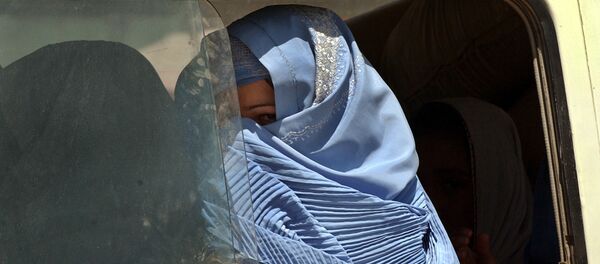Twenty-one-year-old Amina Adan received the distinction of becoming Denmark's first hijab-wearing woman to be included in a fashion catalog, which is seen as a breakthrough for diversity and is expected to promote Islamic fashion.
"I've been in the fashion industry for 30 years, and I'm so happy whenever we hire a darker-skinned or an Asian girl. And Amina is just one of many who will show our diversity," a proud Jacqueline Mikkelsen, Unique Models administrative director, told Danish Radio.
While praising Adan's beauty and talent as a model, Mikkelsen argued that the Danish industry was perfectly ready for clothes to be modeled by Muslim girls.
"I believe this will inspire creativity. I expect the Danish fashion industry to show inventiveness and see the potential in booking Amina on an equal footing with others. This might need a bit of resourcefulness, but that's something I believe the Danish fashion industry has," Mikkelsen told Danish Radio.
Mikkelsen explained that she has seen a lot of beautiful girls wearing Islamic headdress, but has always hesitated to ask them how they felt about becoming a model. Incidentally, Adan was only spotted at a bus stop by one of the agency's scouts several weeks ago.
"Internationally, there are very, very few models who have worked while wearing a hijab. In the US, there is one young woman who has modeled for many of the large fashion houses and in many of the big department stores, but that is an extremely small segment, and this is something that is very much in its infancy," Chris Pedersen said.
However, since much of the debate in the fashion industry circulates around the ideals it should promote, the models are often seen as role models. Pedersen argued that Muslim women have been previously left out of the picture with weight, gender and color being the focal points of the discussion.
Unique Models director Jesper Thomsen incidentally echoed this opinion when he contended that the fashion market has ripened for more variety despite a hitherto tepid demand for hijab-clad models.
"We can feel a tendency in the whole fashion branch to embrace more diversity, so we thought it was worth it to give it a shot," Jesper Thomsen said, dismissing the speculations about the hijab being a political statement. "We don't have quotas for red-headed, blue-eyed or even hijab-clad models," he noted in an interview with the Danish newspaper Extra Bladet.
In Denmark's neighbor Norway, the hijab debate flared anew earlier this year after Princess Märtha Louise attended Prince Richard's funeral in the company of a hijab-clad court lady, Zakia Ahmed Akkouh. This appearance enflamed the critics of Islam in Norway.
"It was the last nail in the Royal House's coffin for my part. Why does the Royal House promote further divisions in our society? The hijab is a symbol of political Islam, and the Royal House should not allow it in our enlightened society," Norwegian journalist and political activist Hege Storhaug told the Danish newspaper BT.
At present, Muslims constitute close to 5 percent of Denmark's population of 5.6 million.




